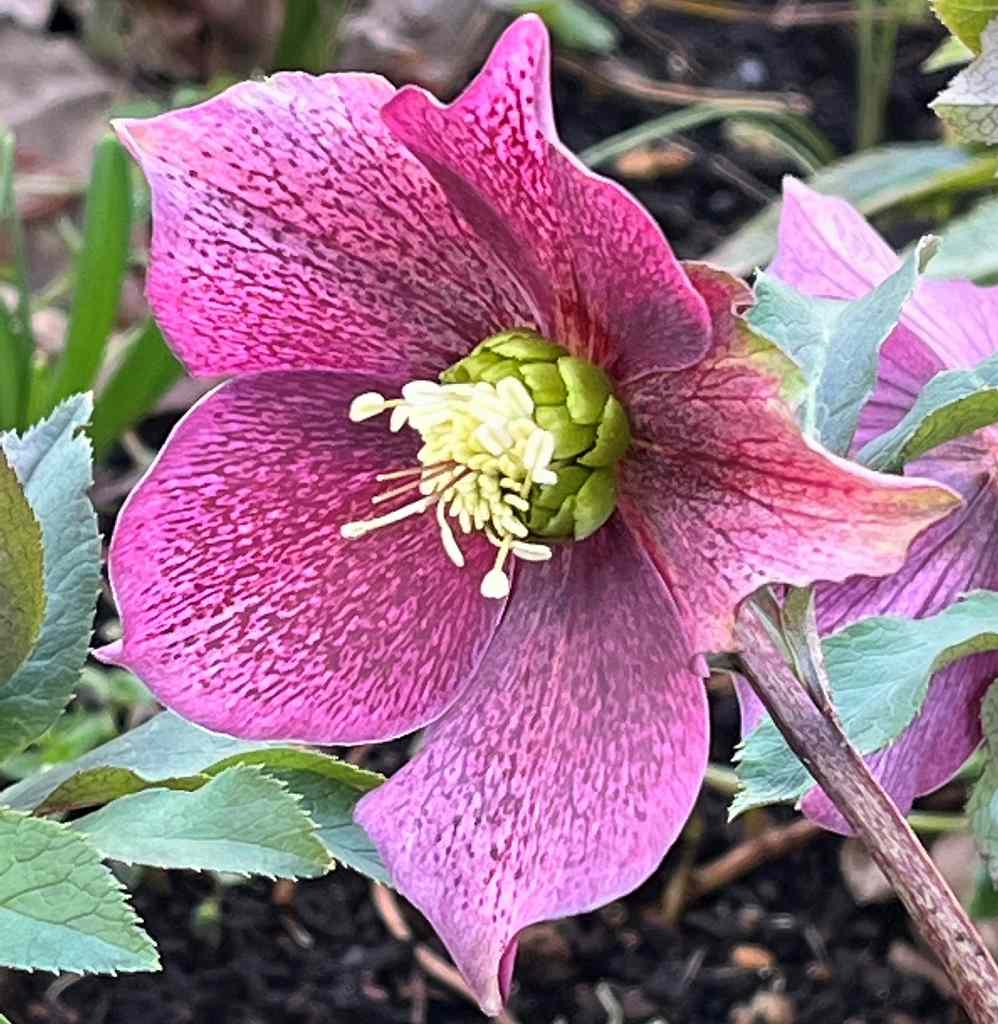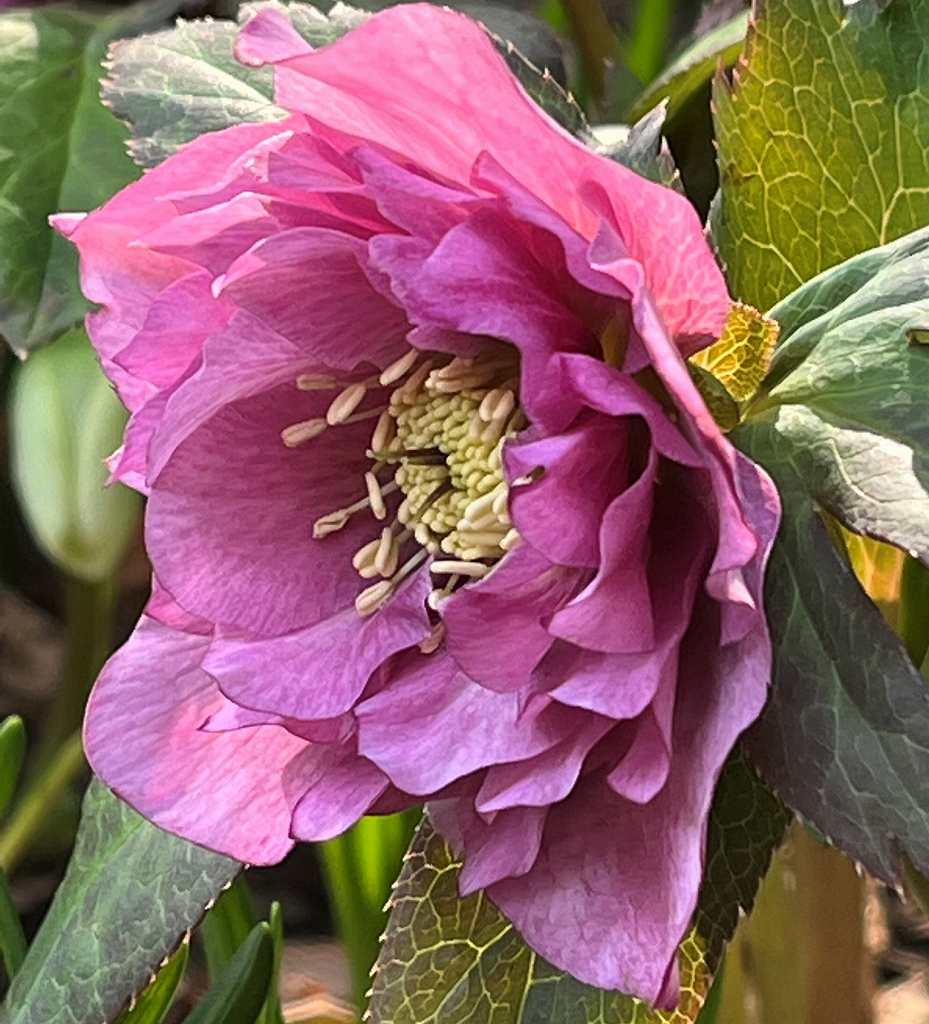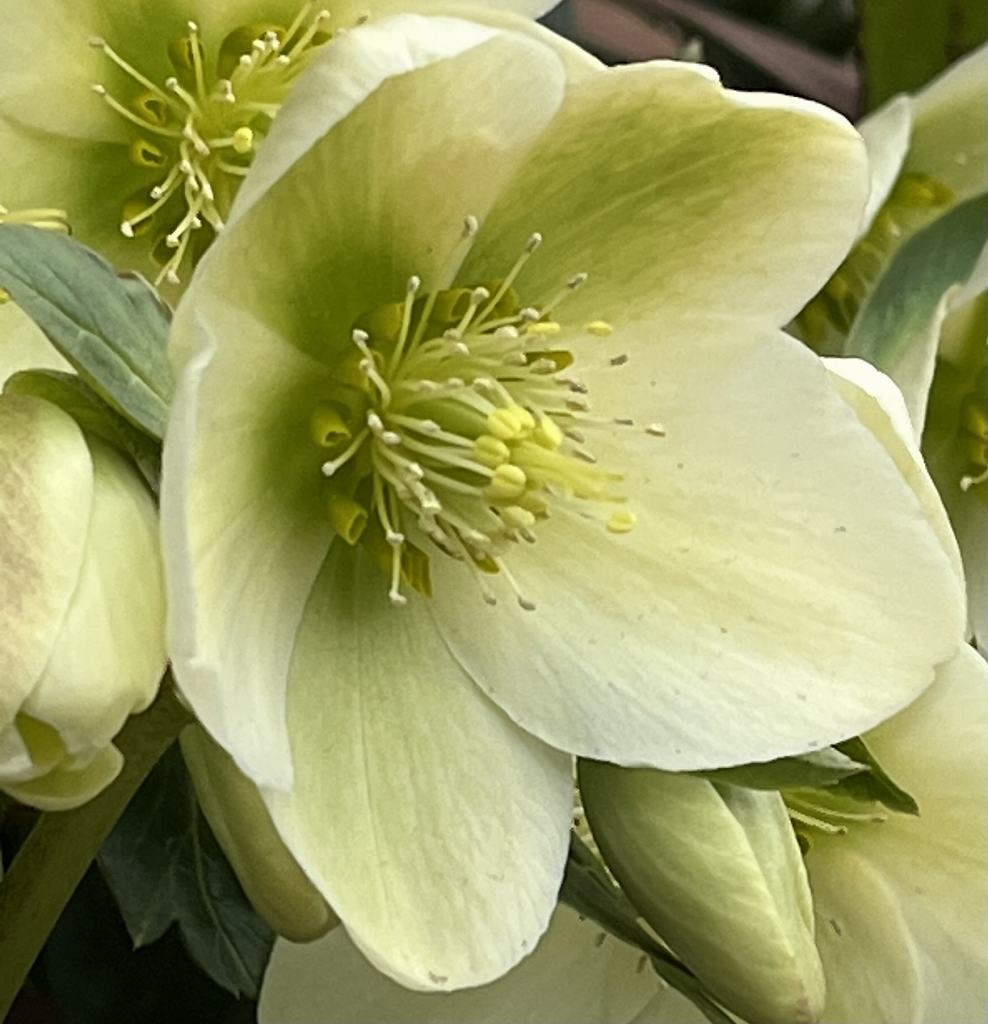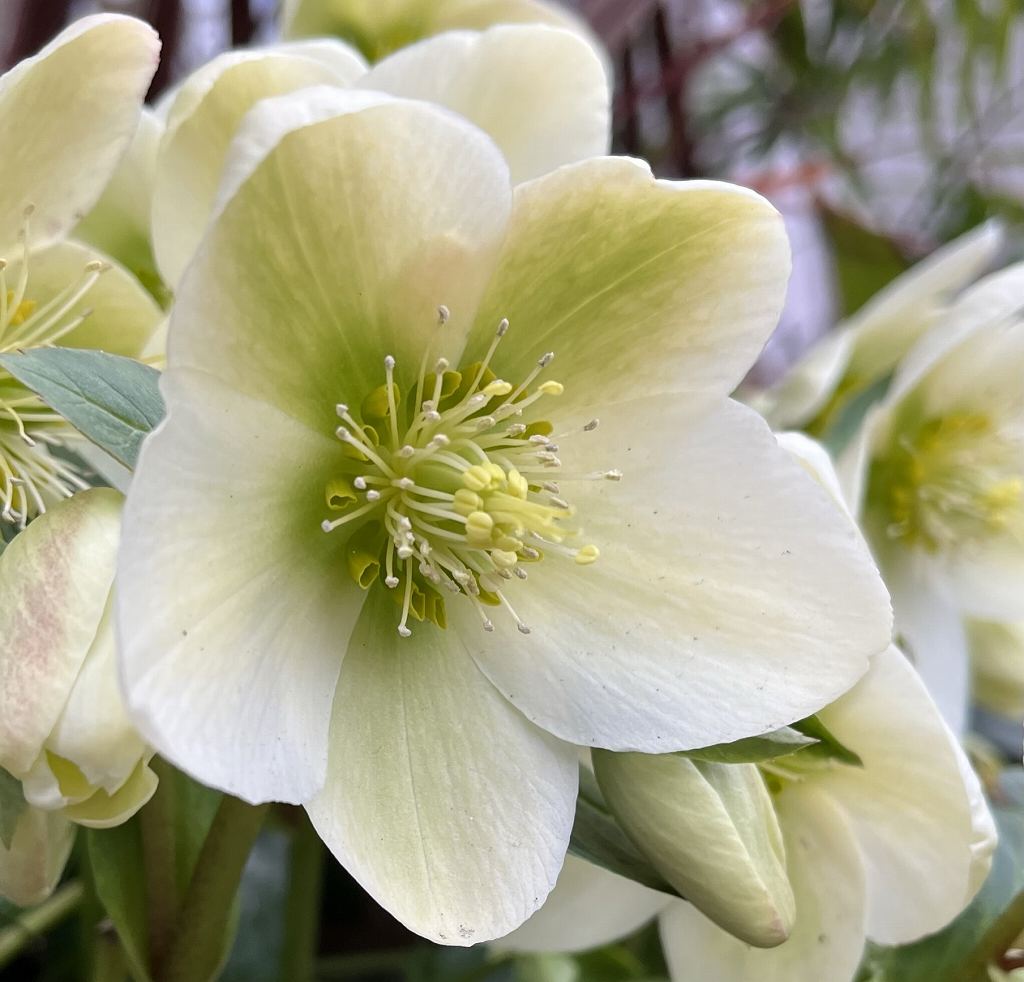ヘレボルスは昔、風情のある茶花として「初雪おこし」や「寒芍薬」という和名に。しかし、その後「クリスマスローズ」に一括されました。
Hellebore used to be called “Hatsuyuki Okoshi” or “Kan Shakuyaku” as a tasteful tea flower. However, after that, it was put together in “Christmas Rose”.
【仮名】ヘレボルス, クリスマスローズ
【和名】初雪起こし, 寒芍薬
【英名】Hellebore
【学名】Helleborus
【誕生】11/ 16, 12/ 16, 12/ 19, 12/ 26
【開花】01, 02, 03, 04, 12月
【花色】White, Pink, Red, Green
ヘレボルス
ヘレボルスの原種

ヘレボルスはキンポウゲ科クリスマスローズ属の総称で多年草。原種のほとんどはヨーロッパ中西部からトルコ、シリア、ジョージアなど黒海周辺まで分布しています。そしてただ1種、遠く離れて中国中西部に「チベタヌス」が分布。夏に雨が少なく、冷涼な地域に自生しています。
ヘレボルスの名前

ヘレボルスは名前が色々。原種「ニゲル」は冬の12月に白い花を咲かせます。名前は「黒」という意味で根の色に由来。開花時期から「クリスマスローズ」と呼ばれます。一方、交配種「オリエンタリス」は4月に開花。キリスト教の四旬節に因んで「レンテンローズ」と呼ばれます。
ヘレボルスの渡来

ヘレボルスが日本に伝わったのは江戸末期~明治初期。ニゲルは下向きに咲く風情が茶花として好まれ、「初雪おこし」という和名を授かりました。オリエンタリスも同様に「寒芍薬」と。しかし、日本ではその後、ヘレボルス属全体がクリスマスローズと呼ばれるようになりました。
ヘレボルスの形態

ヘレボルスで花びらのように見えるのは花弁でなく萼片。そのため、花が長い間、咲き続けます。一方、花弁が蜜腺として残り、それが大きく発達した品種も育成。花びらが重なっているように見えて華やかです。花後の夏は根が活動を休止。呼吸しているだけの休眠状態になります。
ヘレボルスの毒性

ヘレボルスは葉・根茎に強心配糖体ヘレブリンを含有。かつて強心剤、下剤、堕胎薬などに使われましたが、服用は危険です。そもそも学名もラテン語で「食べる」と「死ぬ」の合成語。嘔吐、腹痛、下痢、痙攣、呼吸麻痺、目眩、精神錯乱、心拍数の低下、心停止を引き起こします。
Hellebore

Hellebore is a general term for the genus Ranunculaceae, the genus Christmas rose, and is a perennial plant. Most of the original species are distributed from the Midwestern part of Europe to around the Black Sea such as Turkey, Syria and Georgia. And only one species, “Thibetanus” is distributed far away in the Midwestern part of China. It grows naturally in cool areas with little rain in the summer.
Hellebore has various names. The original species “Niger” blooms white flowers in December in winter. The name is derived from the color of the root, meaning “black”. It is called “Christmas rose” for the time of flowering. On the other hand, the hybrid “Orientalis” blooms in April. It is called “Lenten Rose” after the Christian Lent.
Hellebore was introduced to Japan from the late Edo period to the early Meiji period. Niger was given the Japanese name “Hatsuyuki Okoshi” because of its downward blooming taste as a tea flower. Orientalis is also called “Kan Shakuyaku”. However, in Japan, the entire genus Hellebore has since become known as the Christmas rose.
It is the calyx, not the petals, that looks like petals in the hellebore. Therefore, the flowers will continue to bloom for a long time. On the other hand, varieties in which petals remain as nectaries and are greatly developed are also cultivated. It looks like the petals are overlapping and it is gorgeous. In the summer after flowering, the roots are inactive. You will be dormant just by breathing.
Hellebore contains the cardiac glycoside hellebrin in its leaves and rhizomes. It was once used as a cardiac stimulant, laxative, and abortion drug, but it is dangerous to take. In the first place, the scientific name is also a Latin word that is a compound word of “eat” and “die”. It causes vomiting, abdominal pain, diarrhea, convulsions, respiratory paralysis, dizziness, confusion, low heart rate and cardiac arrest.



